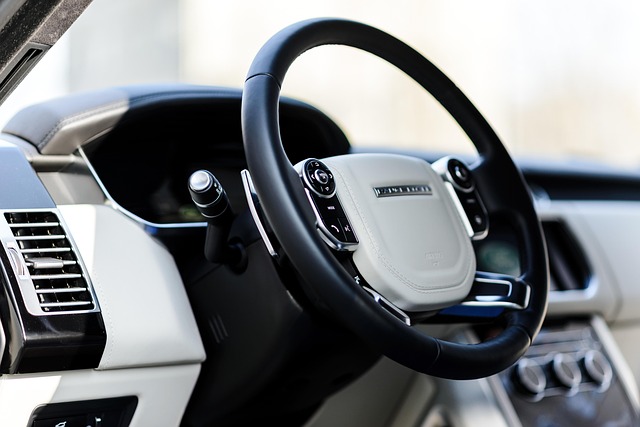ABS sensors crucial for safe 4×4 off-road adventures in Brownsville. Understand their function, regularly inspect and maintain them to prevent failures. Manageable DIY repairs with safety precautions, parking on level ground, isolating the sensor, testing for damage, using a multimeter, installing a replacement, and checking brake performance. Essential Tips for overland 4×4 Repair for adventurous drivers in Brownsville.
ABS (Anti-lock Braking System) sensors are crucial components of modern vehicles, ensuring safe and controlled stops. This article delves into the basics of ABS sensors, their functionality, and common issues faced by drivers. For those interested in tips for overland 4×4 repair in Brownsville, we provide a step-by-step guide to troubleshooting and repairing these essential systems. Learn how to navigate potential challenges and keep your vehicle’s braking system in top condition.
- Understanding ABS Sensors: Basics and Functionality
- Common Issues and Troubleshooting Tips for ABS Sensors
- Repair Process: Step-by-Step Guide for Overland 4×4 Vehicles in Brownsville
Understanding ABS Sensors: Basics and Functionality

ABS sensors, or Anti-lock Braking System sensors, play a crucial role in modern vehicle safety, especially for adventurous drivers who often tackle rough terrain with their 4x4s. These sensors are strategically placed near each wheel and constantly monitor wheel speed during braking. Their primary function is to detect if a wheel is locking up, which can occur during sudden stops or when driving on challenging surfaces like mud, sand, or gravel—common scenarios for off-road enthusiasts in Brownsville.
When an ABS sensor detects a potential lockup, it sends this information to the vehicle’s computer, which then takes immediate action. It does so by pulsing the brakes gently and individually on each wheel to maintain traction and prevent skidding. This dynamic process allows drivers to maintain control and steer their vehicles effectively, making off-road repairs in Brownsville a bit smoother and safer. Understanding how ABS sensors function is essential for anyone looking to navigate challenging terrains with confidence, ensuring a memorable yet secure 4×4 adventure.
Common Issues and Troubleshooting Tips for ABS Sensors

ABS sensors, crucial components in modern vehicles, can encounter issues that impact driving safety. Common problems include sensor failure, loose connections, or damage from road debris. When an ABS sensor malfunctions, drivers may notice a warning light on their dashboard, reduced braking performance, or unusual noise during braking.
For those engaging in overland 4×4 adventures in Brownsville, troubleshooting these sensors is essential for safe off-road driving. Start by inspecting the sensors visually for any signs of damage or corrosion. Ensure proper connections to the brake system and check for power supply issues. Referring to vehicle manuals or seeking advice from local automotive experts can provide tailored Tips for overland 4×4 repair. Regular maintenance, including cleaning and replacing worn components, is key to preventing ABS sensor failures during challenging terrain navigation.
Repair Process: Step-by-Step Guide for Overland 4×4 Vehicles in Brownsville

Repairing an ABS sensor in a 4×4 vehicle, especially one designed for off-road adventures like those found in Brownsville, can seem daunting but is entirely doable with the right guide. Here’s a step-by-step process to help you navigate the repair:
1. Safety First: Ensure your vehicle is on a level surface and engage the parking brake. Pop the hood and locate the ABS sensor, usually near the wheel hub or transmission. Disconnect the negative battery cable first for safety, then isolate the sensor using proper tools.
2. Sensor Removal: Depending on your vehicle model, you may need to remove wheels, brake calipers, or other components to access the sensor. Use specialized tools if necessary and be careful not to damage nearby parts. Once accessible, unplug the sensor’s electrical connector and carefully remove it from its housing.
3. Testing: Check the old sensor for any visible damage or debris. If it’s faulty, use a multimeter to test its resistance; replacement sensors have specific resistance readings.
4. Installation: Obtain a compatible replacement sensor, ensuring it matches your vehicle’s make and model. Reinstall by plugging in the new sensor, securing it, and reattaching any removed components. Make sure all connections are tight.
5. Reconnection: Connect the negative battery cable and start the engine to check if the ABS system is functioning properly. Test brakes gently and observe warning lights on the dashboard for any anomalies.
ABS sensors play a crucial role in ensuring safe braking for overland 4×4 vehicles. By understanding their functionality and common issues, owners can effectively troubleshoot and repair these essential components, such as those detailed in the step-by-step guide for Brownsville residents. When faced with ABS sensor problems, knowing how to navigate the repair process can prevent costly trips to the mechanic and keep your off-road adventures on track. For all things related to overland 4×4 repairs in Brownsville, these tips are a valuable resource to have at your fingertips.
